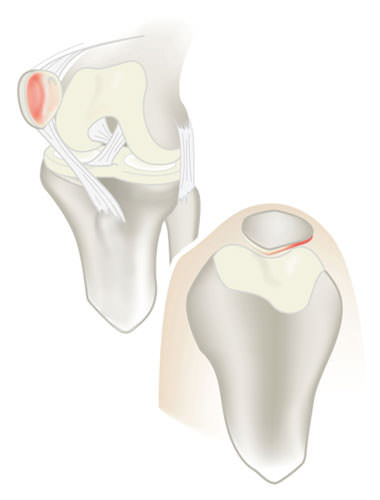
If your favorite sport or exercise regimen involves frequently bending your knees, you may develop a dull, aching pain in the front of one or both joints. That’s a classic sign of runner’s knee, a condition that, as its name suggests, is common among runners but can affect a wider range of active people.
At Summit Orthopedics, our sports and active medicine program helps runners and non-runners in the Minneapolis / St. Paul area find solutions to runner’s knee.
Causes of Runner’s Knee
Medically referred to as patellofemoral pain syndrome, runner’s knee usually develops due to overuse. Running, jumping, climbing stairs and other physical activities involving repeated bending of the knee joint increase your risk for runner’s knee. These activities stress the kneecap, or patella, and the soft tissues around it.
Changing your exercise regimen without giving your knees time to adjust can lead to runner’s knee. If, for example, you suddenly start going on longer runs or running more often during the week, pain in the front of the knee may follow.
Other factors that can contribute to pain on or around the kneecap include:
- Flat feet
- Poor alignment of the kneecap with the thigh bone
- Running or playing sports on a different surface than you’re accustomed to
- Using improper equipment, such as shoes that aren’t appropriate for your activity
- Weak or tight thigh muscles
Knee Pain and Other Symptoms
Pain from runner’s knee rarely appears suddenly. You’re more likely, over time, to develop low-level pain in the front of the joint that occurs during physical activity in which you have to bend your knees.
Other symptoms include:
- Creaking, crackling, grinding or popping sounds in your knees when you climb stairs or stand up after sitting for a long time
- Pain while sitting with your knees bent for long periods of time, such as during a road trip or flight or while working at a desk
- Swelling or tenderness around the kneecap
Diagnosing Runner’s Knee
To diagnose runner’s knee, your Summit Orthopedics sports and active medicine specialist will ask about your symptoms, including their intensity, when they developed, how often they occur and how they affect your daily activities.
Your physician will examine your knee and may gently move or press it to see how the joint responds. In addition, the specialist may ask you to walk, squat or perform other movements to look for problems with your knee strength or gait. To confirm the diagnosis or rule out other problems, your physician may order an imaging study, such as an MRI or X-ray.
Treatments for Runner’s Knee
At Summit Orthopedics, our goal is to help you reduce or eliminate symptoms using the least invasive treatment possible. Many people with runner’s knee see improvement after taking over-the-counter medications for pain, such as acetaminophen or ibuprofen, and following the RICE (rest, ice, compression and elevation) method:
- Rest your knee from any physical activity that triggers pain.
- Ice your knee with cold packs for 20 minutes several times per day.
- Compress the knee with an elastic bandage around the kneecap to aid blood flow and reduce swelling.
- Elevate the joint above the level of your heart when sitting.
If pain persists after several days of following the RICE method, your sports and active medicine specialist may refer you for physical therapy. Summit Orthopedics physical therapists can teach you exercises to strengthen the quadriceps muscles in your thigh, which stabilize and help keep the kneecap in the correct position. Physical therapy can strengthen your abdomen—a strong core can reduce strain on your knees—and improve the joints’ range of motion.
In addition to physical therapy, your physician may recommend wearing orthotic inserts for support and to improve your foot and ankle alignment. Proper alignment in your lower leg may help reduce knee pain. Wearing a knee brace may also relieve discomfort.
Surgery usually isn’t necessary unless your symptoms are severe and nonsurgical treatments don’t help. If surgery is a good option for you, our specialists may perform knee arthroscopy, which requires only two or three small incisions. Surgery involves removing damaged cartilage or correcting the kneecap’s alignment.
Preventing Kneecap Pain
You can reduce your risk of runner’s knee moving forward. Try these tips:
- Adjust your physical activity. If running triggers pain in the front of your knee, try an activity that doesn’t require you to bend and straighten your knee as much, such as swimming laps in the pool.
- Eliminate excess weight. Getting to and maintaining a healthy body weight helps take pressure off your knees.
- Find your best fit. Choose supportive footwear that matches your sport or activity.
- Get your knees (and the rest of your body) ready for exercise. Warm up and cool down to help protect your joints.
- Go gradual. When you want to increase the intensity and duration of your workout, work up to a higher level over time.
Whether you’re recovering from runner’s knee or looking to prevent an injury, the physical therapists with our specialized running program can offer a comprehensive evaluation and develop a tailored treatment plan to keep you active and injury free.
Experiencing pain that is keeping you from running? The experts at Summit Orthopedics can help. Make an appointment today.
